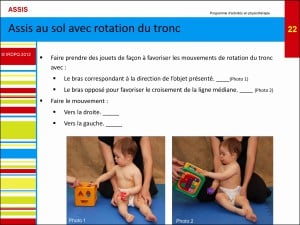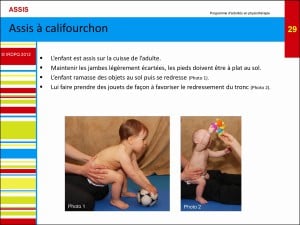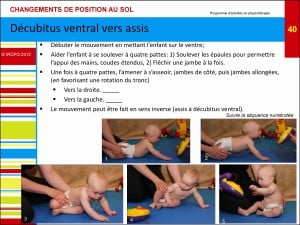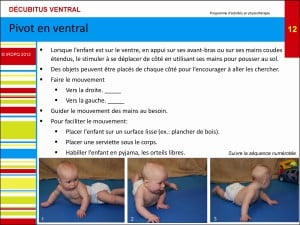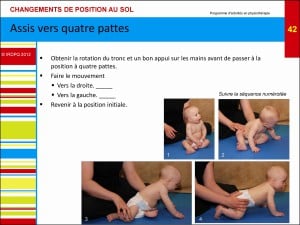To learn about a baby’s motor skill development, read the previous part of this article, “Motor-Skill Development for Babies from 7 to 9 Months and 10–12 Months.”
In this article, I will talk about suggested activities for 7– 9-month-old babies.
- The sitting position is always useful as the baby must be able to become more stable by transferring their weight, over time leading them to get on all fours. It is important to stimulate a range of positions: sitting cross-legged, legs straight out, etc. For example, we can help them acquire this skill by sitting them on our leg to work their torso and weight transfers.
- Stimulating your baby to slither is the stage before crawling on all fours and standing up and walking. To help them complete this activity, you can place your hands under their feet with their hips flexed. You will see how this can encourage them to start this movement. It’s also fun to position yourself on all fours to get them to imitate you—it’s a fun activity to do together!
- The all fours position represents the transition period between the sitting and standing position. By practicing this position, the baby has better stability in their shoulders, torso and hips and acquires more and more coordination of their muscles in preparation for walking. You can support their stomach at the start of this stage and lessen it over time. You should always promote the symmetrical position.
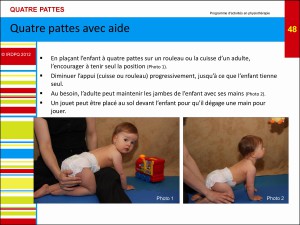
If your If your baby is moving on their bottom at this stage, you should play with them to promote the all fours position to develop the muscle structure of their proximals and hands.
- The stimulation of transfers is essential in the different games that you play with your baby. Move from a lying to sitting to all fours position and vice versa giving them toys and helping them at the start and lessening your help over time.
- The spinning top is an exciting game to play, as the baby will act to start the process and loves it!
- Building blocks to stack, push over, knock together, it’s simple yet so funny to see them repeat their gestures to succeed. Don’t forget to talk to them, say BRAVO!, clap—they will love it.
 Textured books are also a fun activity to develop different tactile feelings, initiate them to the movement of turning pages, and, of course, at the visual level, attractive with colours and images.
Textured books are also a fun activity to develop different tactile feelings, initiate them to the movement of turning pages, and, of course, at the visual level, attractive with colours and images.
- Talk to them, repeat words when you show them an object or person, name the object or person. When you give them milk, say: “Here’s your milk.” They have a huge storage capacity—you have no idea! They often seem not to be listening to you, but they are! They will surprise you by saying words or parts of sentences that you frequently say without you having specifically prompted them to learn it.
- Name the emotion is a way to express an emotion, to legitimise their feelings, that it’s normal. “You’re sad,” “You’re angry.”
To learn more about motor skill development for older babies, read, “Baby Development from 9 to 12 Months.”


